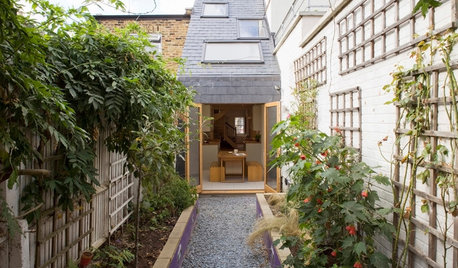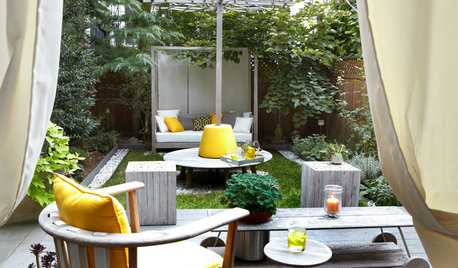Urban Native Landscape Property Border
wrendot1
17 years ago
Related Stories

GARDENING GUIDES10 Deer-Resistant Native Flowers to Plant This Fall
Learn about natives that embrace some kinds of wildlife but resist grazing deer
Full Story
INSPIRING GARDENSNative Plants Bring 10 Southern California Front-Yard Gardens to Life
Rare plants, rain gardens and wildlife habitats are just a few of the features showcased on the 2016 Theodore Payne Native Plant Garden Tour
Full Story
GARDENING GUIDES8 Native Shrubs for Year-Round Bird Feeding
It’s not just about berries. These plants provide insects for birds and seasonal interest for gardeners
Full Story
GARDENING GUIDES10 Top Native Plants for the U.S. Southeast
For a low-maintenance and wildlife-friendly landscape, use Southern natives that withstand heat and humidity
Full Story
LANDSCAPE DESIGNFlood-Tolerant Native Trees for Soggy Soil
Swampy sites, floodplains, even standing water ... if you've got a soggy landscape, these trees are for you
Full Story
GARDENING AND LANDSCAPING9 Creative Ideas for Urban Outdoor Spaces
You can make the most of your small backyard or balcony with these landscape design elements
Full Story
LANDSCAPE DESIGN7 Ways to Create Quiet in Urban Gardens
Keep your garden peaceful with these ideas for planting and material choices
Full Story
GARDENING GUIDESGarden-Friendly Native Alternatives to Overplanted Exotics
There are lots of gorgeous, wildlife-friendly native plants ready to make an appearance in your garden
Full Story
GARDENING FOR BUTTERFLIES3 Ways Native Plants Make Gardening So Much Better
You probably know about the lower maintenance. But native plants' other benefits go far beyond a little less watering and weeding
Full Story
GARDENING GUIDESWe Bust 4 More Native Plant Myths
Have you been taken in by these fallacies about gardening with native plants?
Full Story





bob64
joepyeweed
Related Professionals
Palm Springs Landscape Architects & Landscape Designers · Matthews Landscape Contractors · Brockton Landscape Contractors · Cedar Hill Landscape Contractors · Mahwah Landscape Contractors · San Carlos Park Landscape Contractors · Santa Ana Landscape Contractors · Watertown Landscape Contractors · Lauderdale Lakes Landscape Contractors · Bellevue Decks, Patios & Outdoor Enclosures · Grain Valley Decks, Patios & Outdoor Enclosures · Lockport Decks, Patios & Outdoor Enclosures · Marlboro Decks, Patios & Outdoor Enclosures · New Lenox Decks, Patios & Outdoor Enclosures · South Milwaukee Decks, Patios & Outdoor Enclosuresgonativegal
juudyshouse2012